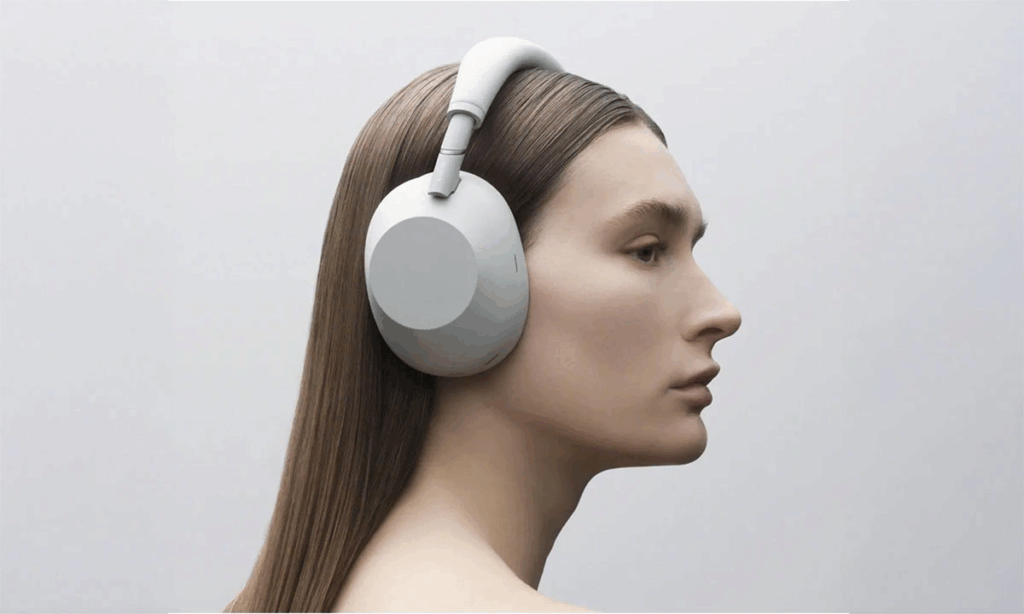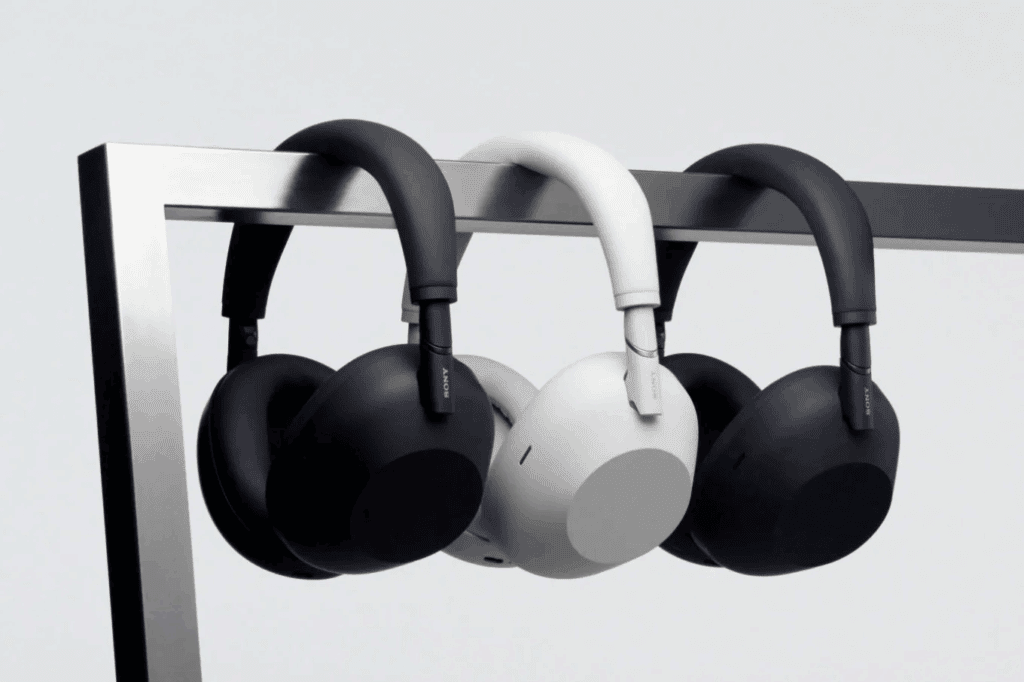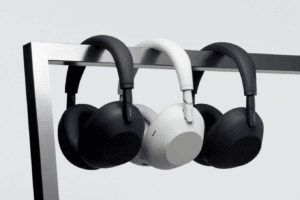Sony’s WH-1000XM6 headphones arrive on the scene with the weight of a reputation behind them. Their predecessors, the XM5 and XM4, dominated the noise-canceling headphone space, and the XM6 carries forward much of what made those models successful: exceptional noise cancellation, adaptive sound control, ambient mode, and smart touch controls. On paper, this is a top-tier headset.
But dig past the glossy marketing, and cracks begin to show. For a product that retails around £450 (roughly $550 USD), expectations are sky-high, and the WH-1000XM6 doesn’t always meet them. While still a strong offering overall, these headphones suffer from a surprising number of drawbacks that are often glossed over in more enthusiastic reviews.
Let’s break down what doesn’t work, and why you might want to think twice before spending premium cash on Sony’s latest flagship cans.
Table of Contents
- 1 Plastic Build Feels Less Premium Than the Price Tag
- 2 Annoying Microphonic Sounds When Touched
- 3 Touch Controls: Convenient but Clumsy
- 4 No Lossless Audio via USB-C
- 5 LE Audio Still Has Noticeable Latency
- 6 Stock Sound Signature: Bass-Heavy and Muffled
- 7 Wind Noise Ruins Outdoor Listening
- 8 Zero Water Resistance
- 9 They’re Expensive, and Will Likely Drop in Price Later
- 10 Ear Cups Are Compact and Shallow
- 11 Not Ideal for Neck-Wearing
- 12 Multipoint Bluetooth Connectivity Is Hit-or-Miss
- 13 EQ Lowers Overall Volume
- 14 Analog Wired Listening Sounds… Bad
- 15 Final Thoughts: Great Tech, Questionable Execution
At £450, you’d expect materials that scream luxury. Instead, the WH-1000XM6 sticks with a primarily plastic construction, just like the XM5. Sure, it helps keep the weight down, great for long listening sessions, but the material choice robs the headset of that high-end feel.
The plastic is smooth and well-finished, but in your hands, it still feels closer to a mid-range product than something competing with the metal-and-glass build of the AirPods Max. There’s a subtle “hollow” quality when you tap the cups or adjust the headband, nothing dramatic, but enough to remind you these aren’t crafted from aluminum or steel.
For a product positioned at the upper end of the consumer audio market, the lack of premium materials can come across as cutting corners. Some might argue function over form, but at this price, people rightly want both.
Annoying Microphonic Sounds When Touched

A strange, often overlooked issue with the XM6 is its microphonic response to touch. Simply handling the headphones, adjusting them on your head, or brushing your hand against the cup, can result in high-frequency noise playing back through the speakers.
This is especially noticeable when fingers rub across the plastic body or the external microphones. The static-like sound it generates isn’t just distracting, it’s outright unpleasant, especially during quiet moments in your music or while using ambient mode.
You don’t have to be fidgeting either. Even just resting your hand to reposition them can trigger this sound, which feels like a design flaw that slipped through the cracks during quality assurance.
Touch Controls: Convenient but Clumsy
Touch-sensitive controls on the ear cup might look futuristic, but in practice, they’re fussy and prone to error. Swipe up to increase volume, down to lower it, double-tap to play/pause… until you accidentally skip a track because you meant to adjust your headphones.
The surface is overly sensitive. Users report pausing music just by brushing the cup or misfiring a volume change while trying to adjust the fit. If you’re wearing gloves or have sweaty fingers, accuracy drops even further.
Some users might prefer this to physical buttons, but if you value precision, old-school tactile controls or rotary dials (like those on the AirPods Max or Bowers & Wilkins PX7) are far less frustrating.
No Lossless Audio via USB-C

The XM6 includes a USB-C port for charging, but, critically, it doesn’t support lossless audio through that connection. This is a missed opportunity in a landscape where high-resolution audio streaming is increasingly common, and where USB-C headphones have become viable alternatives to analog jacks.
While you can connect an analog cable for wired listening, it’s not a substitute for digital lossless. The omission is especially glaring for audiophiles or users subscribed to services like Tidal HiFi, Apple Music Lossless, or Amazon Music HD.
If you’re paying top dollar, why settle for compressed Bluetooth audio as your only viable listening mode?
LE Audio Still Has Noticeable Latency
Sony touts LE Audio and the LC3 codec support as part of the XM6’s next-gen wireless features. But real-world testing reveals a latency of 100ms or more, which is noticeable during gaming or video editing.
For music and movies, this may not be a deal-breaker. But for mobile gamers or professionals using these with tablets or laptops, the delay becomes frustrating. Despite marketing claims, this isn’t “ultra-low” latency, and it’s not suitable for competitive gaming or precision-critical work.
It’s future-forward tech with present-day compromises.
Stock Sound Signature: Bass-Heavy and Muffled

Sony’s default tuning is, to put it bluntly, polarizing. Some love the emphasis on bass, but many describe it as overwhelming and unbalanced, with the midrange sounding “recessed” and the overall tone coming across as muddy and congested.
One reviewer said the headphones sound like they’re playing underwater. That’s not what you want out of a premium audio product.
To be fair, Sony’s app allows for manual EQ tweaking, but why make users fix the sound themselves? Not everyone wants to mess around with sliders or download EQ presets just to make their music sound normal.
Wind Noise Ruins Outdoor Listening
If you use ambient or transparency mode while walking outside, be prepared for wind noise chaos. The microphones pick up wind and convert it into harsh, high-frequency static, which gets pumped directly into your ears.
Even light breezes can trigger this, making outdoor listening irritating and inconsistent. It’s worse during phone calls, where wind cuts clarity and makes conversations harder than they should be.
This isn’t new to the XM6, either. It’s a lingering issue from previous generations, and it’s disappointing that Sony hasn’t found a better wind-reduction algorithm or hardware solution.
Zero Water Resistance
Let’s be crystal clear: these are not waterproof headphones. They’re not even splash-resistant. There’s no IP rating at all.
That means: don’t wear them in the rain. Don’t sweat heavily in them. And definitely don’t toss them in your gym bag next to a leaky water bottle.
This is an especially bizarre oversight for headphones at this price. Even many mid-range earbuds offer IPX4 or IPX5 resistance. For £450, this lack of durability is more than an inconvenience, it’s a real risk for everyday users.
They’re Expensive, and Will Likely Drop in Price Later

At launch, the WH-1000XM6 was priced at £450, a full £50 more than the XM5’s launch price. That makes them one of the most expensive mainstream noise-canceling headphones on the market.
And here’s the kicker: Sony’s headphones always go on sale. You can usually pick up the previous-gen model for significantly less within 6–12 months. If you buy these at launch, you’re paying a premium for early access, and that premium is steep.
Unless you urgently need the XM6 right now, waiting could save you £100 or more.
Ear Cups Are Compact and Shallow
Comfort matters, and here’s where the XM6 stumbles again. The ear cups, while plush, are shallow and narrow. For those with average or larger ears, this can lead to the ear pressing against the inside lining, causing discomfort over time.
Rather than creating a spacious, encompassing seal, the design ends up squishing your ears, a problem that becomes noticeable after about 90 minutes of use. This is disappointing, especially since noise-canceling performance is partly tied to a good seal.
Sony could’ve fixed this with slightly deeper padding or a wider cup shape. They didn’t.
Not Ideal for Neck-Wearing

This one might seem minor, but it adds up if you wear headphones often. When you take the XM6 off your ears and rest them around your neck, the ear cups lie flat against your chest, pushing up toward your jawline.
This makes the fit awkward and tight, especially if you’re moving around or wearing a jacket. Unlike other headphones that angle the cups slightly outward for a relaxed neck fit, the XM6 feels more constrictive.
It’s a small design choice that affects real-world comfort.
Multipoint Bluetooth Connectivity Is Hit-or-Miss
On paper, the XM6 supports multipoint pairing, letting you connect to two devices at once, like your phone and laptop. In practice, it’s not always reliable.
Many users report needing to manually reconnect one of the devices, especially if switching between different operating systems (e.g., Android and Windows). Sometimes the second device won’t connect until you toggle Bluetooth off and on again.
For something that’s supposed to just work, it too often doesn’t.
EQ Lowers Overall Volume
Using Sony’s customizable EQ in the Headphones Connect app is a must if you want to fix the default sound, but here’s the catch: engaging any EQ profile reduces the overall volume.
This is an issue because louder usually sounds better to human ears. The drop in volume biases comparisons against your adjusted profile, and can make fine-tuning feel less satisfying or even misleading.
Why can’t Sony preserve volume levels when EQ is active? No one knows, but it’s been this way for multiple generations now.
Analog Wired Listening Sounds… Bad
Here’s a real kicker: if you use the XM6 with a standard 3.5mm cable while the headphones are off (say, to save battery), the sound quality takes a nosedive.
Multiple reviewers describe the analog performance as “awful”, with bloated mids, recessed highs, and a dull, lifeless presentation. Even when powered on, using the analog cable means you lose all EQ and processing enhancements.
That makes wired listening feel like a half-baked afterthought, which is ironic given the wireless limitations we’ve already covered.
Final Thoughts: Great Tech, Questionable Execution
There’s no doubt that the Sony WH-1000XM6 brings a ton of features to the table: elite noise cancellation, strong app support, good battery life, and sleek looks. But for all its strengths, the experience is riddled with nagging compromises that undercut the premium promise.
Whether it’s the shallow ear cups, the lack of water resistance, or the frustrating touch controls, the XM6 often feels like a headphone that’s 90% there, but 10% annoying. And when you’re paying £450, that 10% matters.
If you’re an audiophile, a casual listener, or someone who just wants reliable gear, make sure to weigh these drawbacks carefully. The WH-1000XM6 might still be a worthy buy, but it’s far from flawless.
Sony WH-1000XM6

Sony’s WH-1000XM6 headphones arrive on the scene with the weight of a reputation behind them. Their predecessors, the XM5 and XM4, dominated the noise-canceling headphone space, and the XM6 carries forward much of what made those models successful: exceptional noise cancellation, adaptive sound control, ambient mode, and smart touch controls. On paper, this is a top-tier headset.
Product Currency: USD
Product Price: 450
Product In-Stock: InStock
4.8


